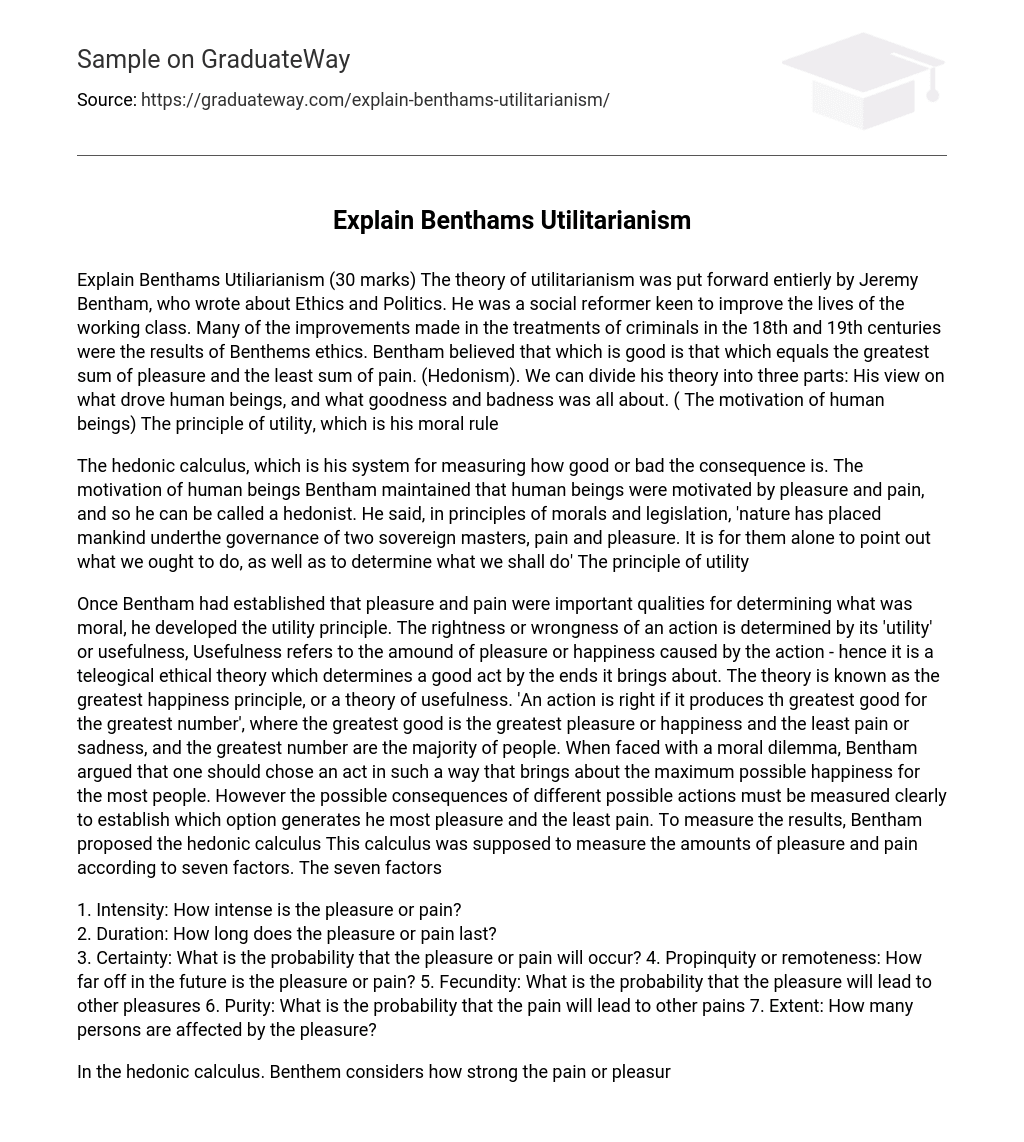Jeremy Bentham, a social reformer and author of Ethics and Politics in the 18th and 19th centuries, introduced utilitarianism as a way to improve the lives of the working class and advocate for ethical treatment of criminals. Bentham’s theory centers on the concept that identifying what is morally right entails maximizing pleasure while minimizing pain (referred to as Hedonism). The theory comprises three elements: his views on human motivation, as well as the fundamental aspects of goodness and badness.
The principle of utility is the moral rule.
In his work “Principles of Morals and Legislation,” Jeremy Bentham, a proponent of hedonism, discusses the concept of the hedonic calculus as a method for evaluating the results of actions. According to Bentham, pleasure and pain play a significant role in shaping human behavior. He suggests that humanity is driven by these two forces in accordance with nature.
The principle of utility
Bentham created the utility principle to determine the morality of actions. This principle states that an action’s value, or utility, is based on the amount of pleasure or happiness it generates. Consequently, this theory judges an act as good if it produces positive outcomes.
The theory, known as the principle of greatest happiness or utility theory, asserts that an action is deemed correct if it generates the most benefit for a large number of people. In this context, “greatest good” denotes maximum pleasure or happiness, while “least pain” indicates minimal sadness or discomfort. Additionally, the phrase “greatest number” refers to the majority of individuals.
Bentham proposed that the optimal approach in facing a moral predicament is to select an action that maximizes happiness for the majority. To determine the most preferable option, it is essential to meticulously assess the potential consequences and ascertain which choice yields the greatest pleasure and minimal suffering. Bentham introduced the concept of the hedonic calculus, involving quantifying pleasure and pain through seven distinct factors.
The seven factors
- Intensity: How intense is the pleasure or pain?
- Duration: How long does the pleasure or pain last?
- Certainty: What is the probability that the pleasure or pain will occur?
- Propinquity or remoteness: How far off in the future is the pleasure or pain?
- Fecundity: What is the probability that the pleasure will lead to other pleasures
- Purity: What is the probability that the pain will lead to other pains
- Extent: How many persons are affected by the pleasure?
In the hedonic calculus
Benthem considers the intensity and duration of pain or pleasure, along with the likelihood of their occurrence. He also reflects on how quickly they can escalate and the potential for a combination of both pains and pleasures, while considering the number of individuals affected. The comparative analysis of weighing pleasures against pains in relation to other choices determines the best outcome. Engaging in the action that results in this advantageous consequence is considered morally correct.





